Following their victory of making it into the playoffs for the first time in 21 years, the West Chicago Community High School football players and coaches are now dedicating their time to off-season training in hopes of excelling even further in the 2024-2025 season.
Consisting of various warmups, workout plans, and summer camps, the team meets outside of hours in order to prepare for their upcoming championship bid.
“Training for me consists of lifting 6 days a week while also making sure I’m going to the field at least 2-3 days a week to work on simple stuff such as route running, catching, speed and agility, etc. We have been a lot better as a team recently getting guys to come out to the field with us to practice and get better,” senior Louis Zielter said.
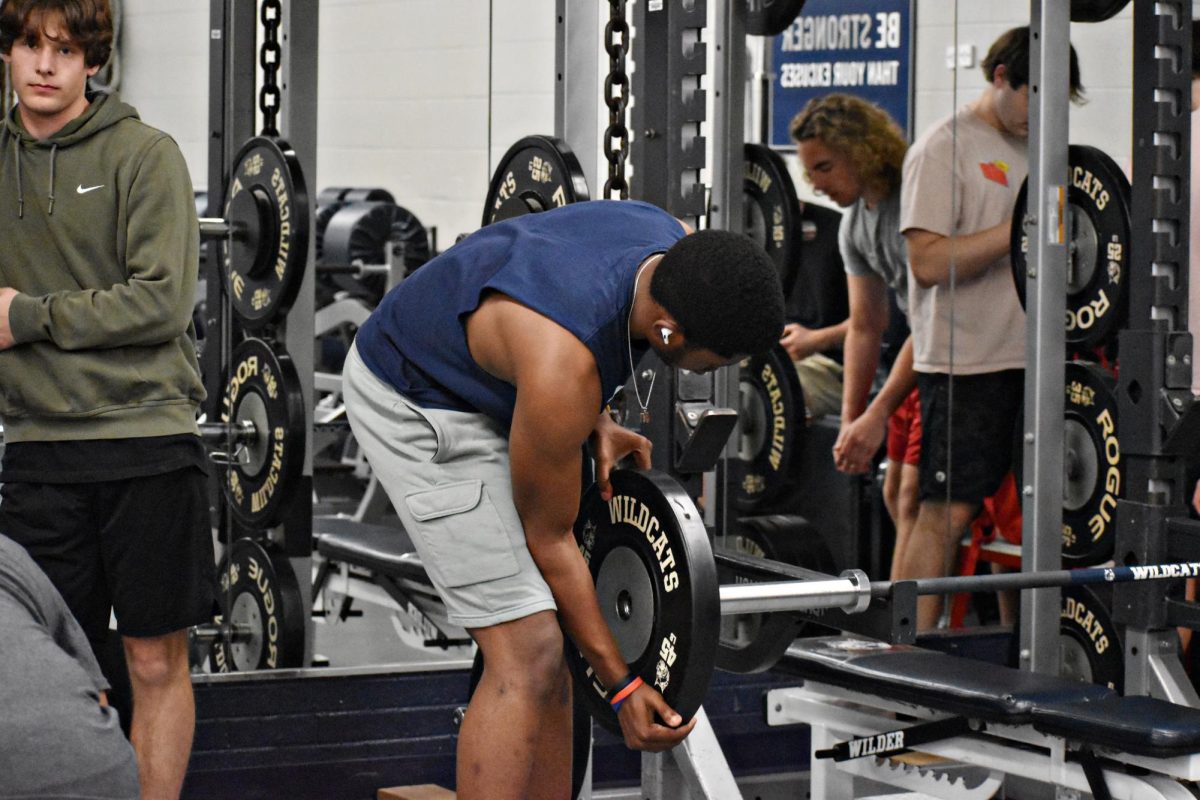
On lifting and maxing days, players meet in the weight room after school and set up their stations before warming up and stretching as a team. Others connect their headphones and hit shuffle on their playlist or talk amongst their peers as they wait to start.
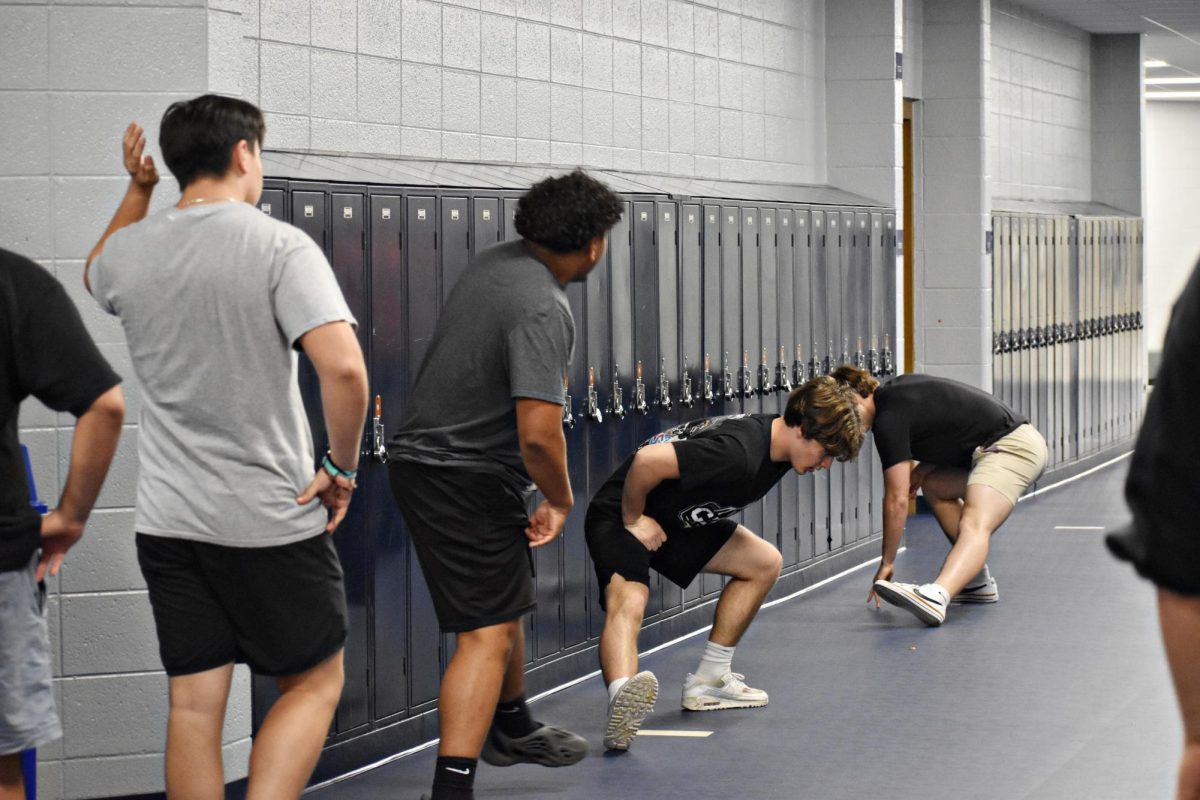
After initial attendance, the team moves to the hallway outside the weight room for a series of routine warmups such as side-to-side stretching, jogging, and vertical jumps. Warming up the body is crucial for increasing performance and avoiding injury.
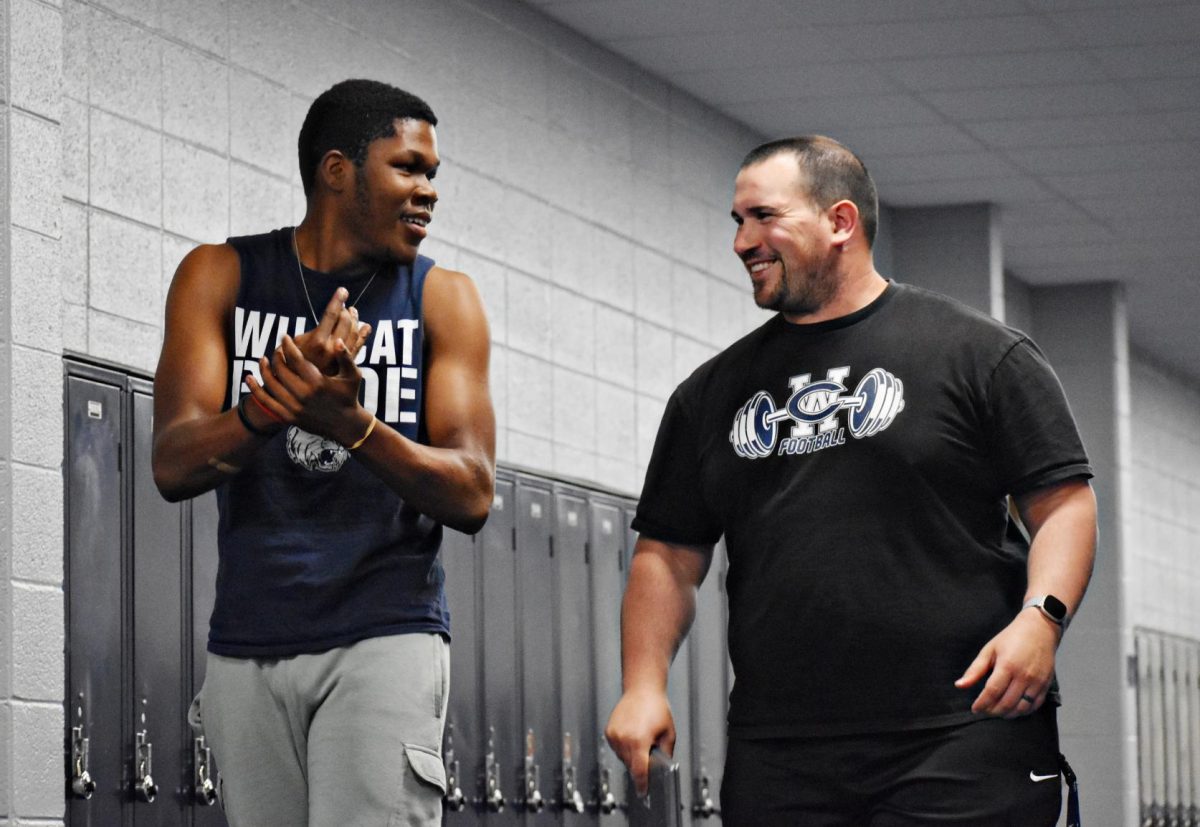
As warmups come to an end, senior Isaiah Sylvester and Coach Joseph Duszynski converse. Not only is training important to the team’s success but also the connection and ability to work together that they create as a whole. Acknowledgment of progress, constructive criticism, and posing as a role model are a few of the many positions coaches hold at WEGO.
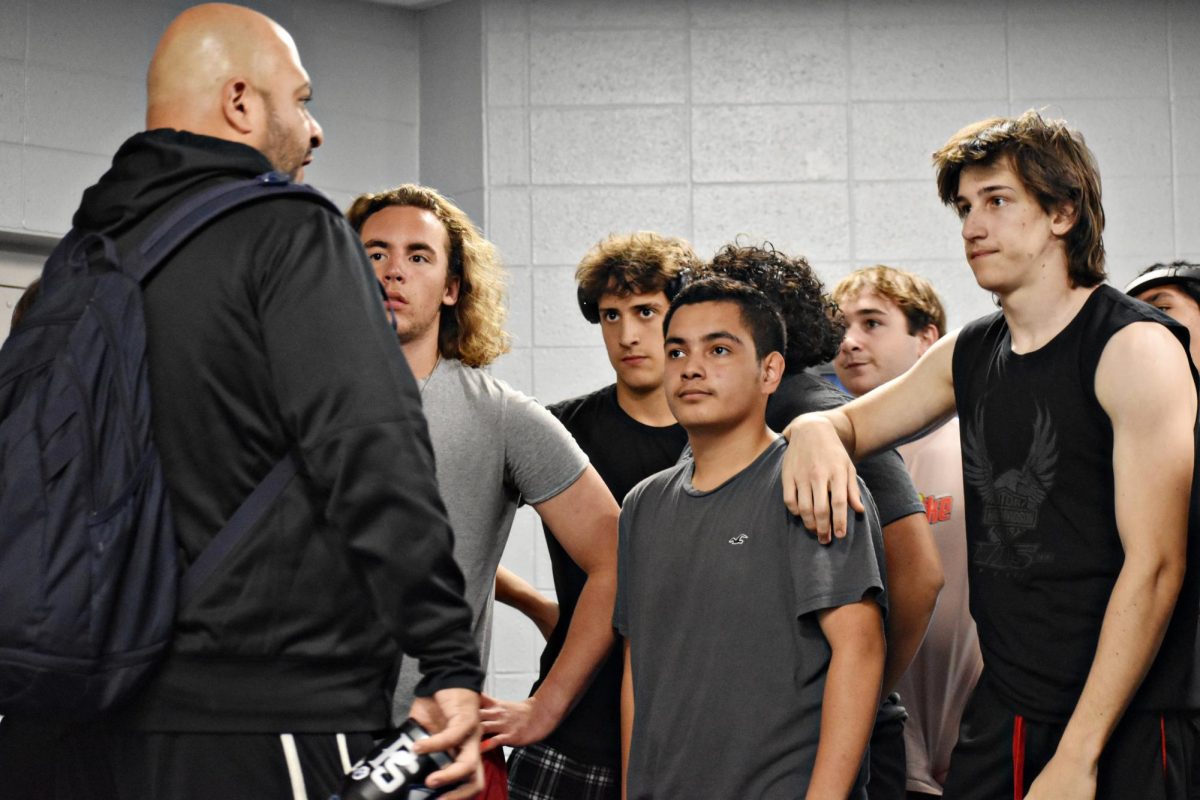
Players show respect to their coaches as they listen intently for instruction from Coach Adam Chavez, who provides a basic rundown of the week’s plans and discusses the soon-beginning football summer camp. This creates an organized environment for everyone involved and helps players plan ahead – enabling training to flow smoothly.
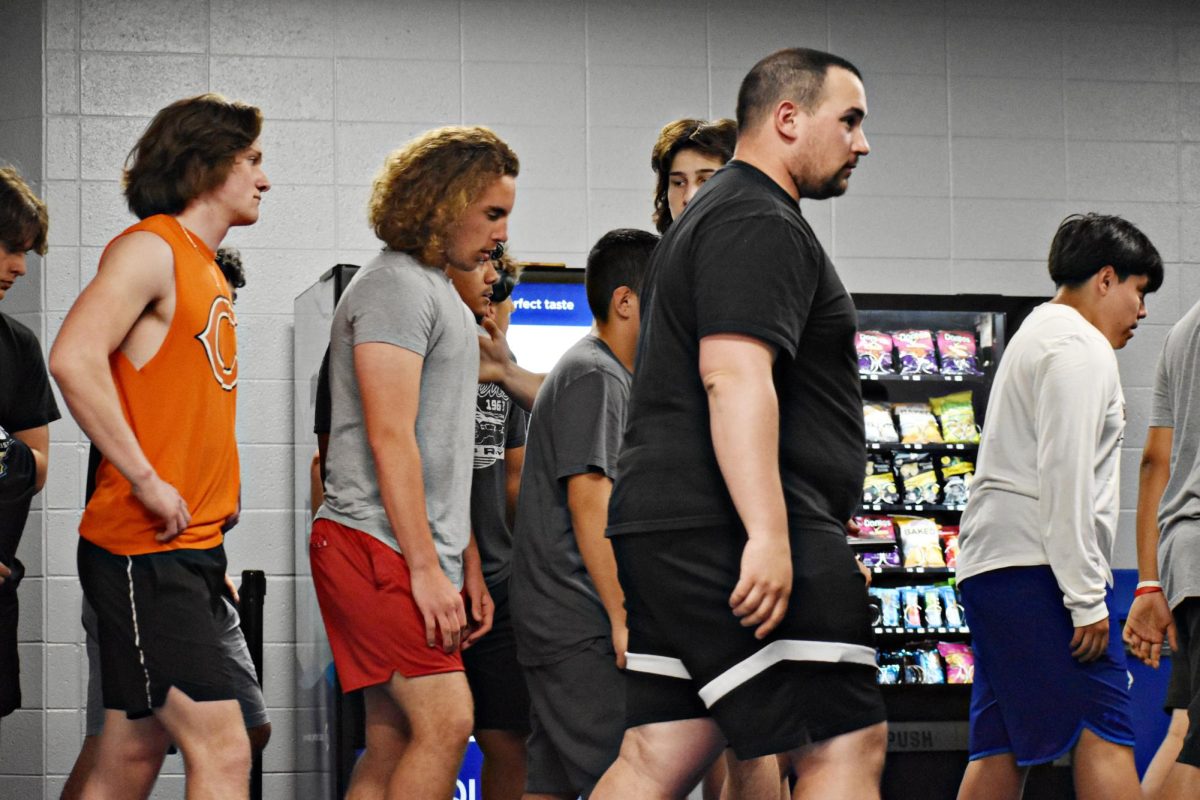
Once the coaches are done laying out the coursework, the team heads back into the weight room to begin their workouts. This particular week consisted of maxing out in upper and lower body lifts such as back squats and hang clean.
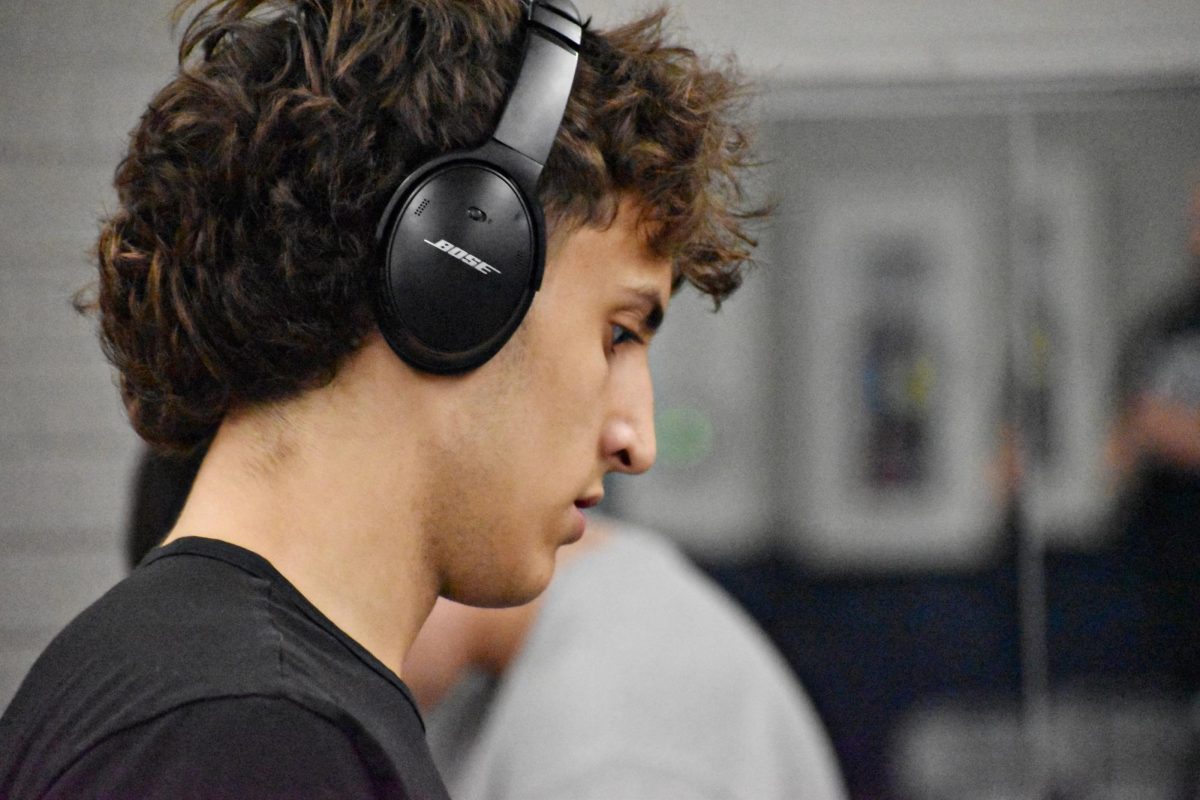
Roman Zolota prepares for his lift attempt as he waits to use the equipment after his teammates, who all cheer each other on. As a junior, he understands the importance of conditioning year-round.
“The most important part of off-season training for me is getting stronger. Football is a very physical sport so if you’re not strong you really won’t get anywhere, and that’s where the off-season is most [valuable]. If you don’t utilize the offseason the right way, you wont make an impact on the field,” Zolota said.
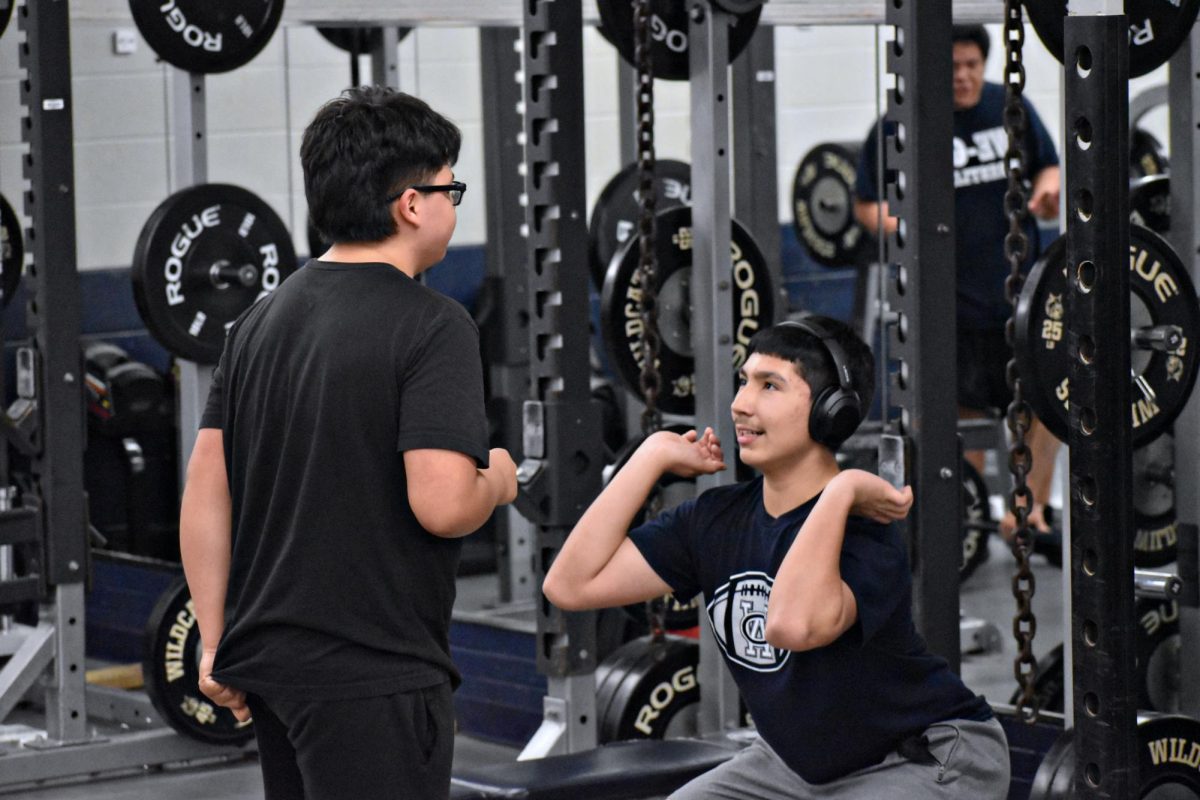
Matthew Gomez assists in modeling the correct lifting form for fellow junior Pedro Zavala. Training is not just about being the best or improving as an individual, but also helping peers so everyone can evolve as a team safely and efficiently.
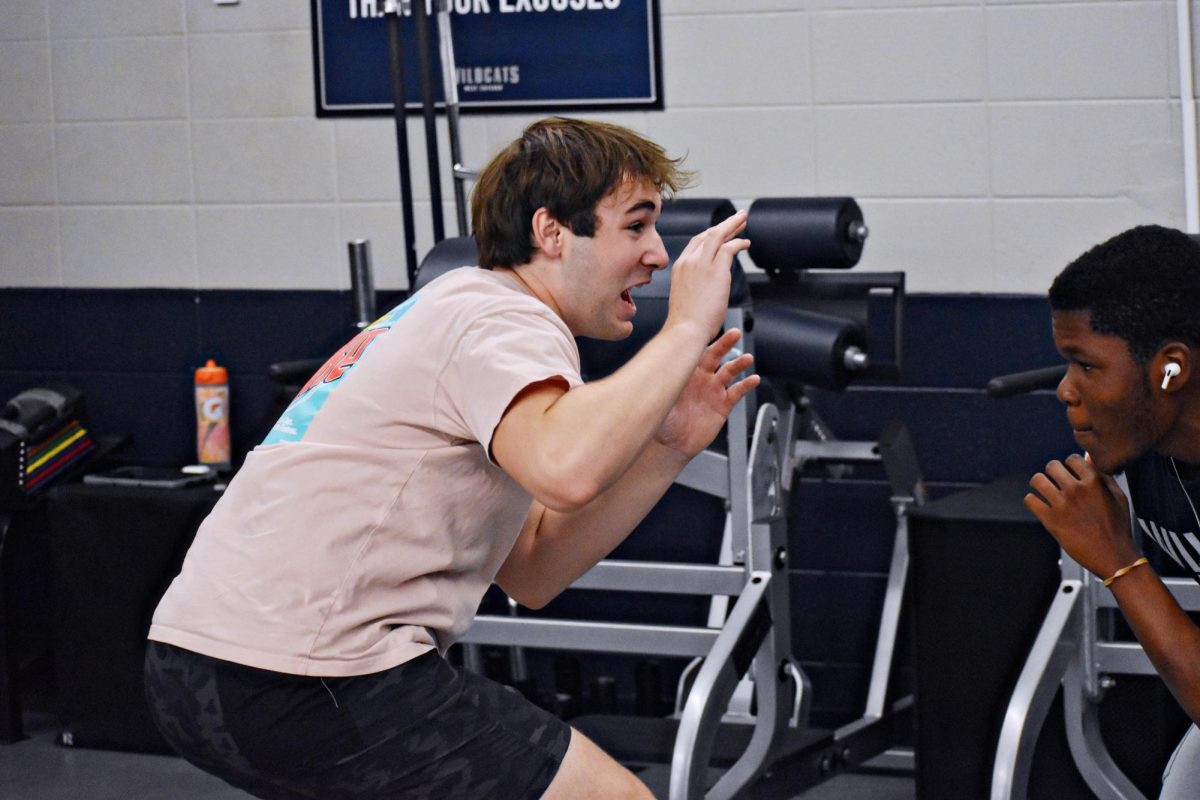
Although putting in effort and focusing on growth is crucial and serious, the team does not forget to have a little fun. While taking a quick break, junior Tommy Weber play-fights with his teammate Sylvester amongst the other lifters.
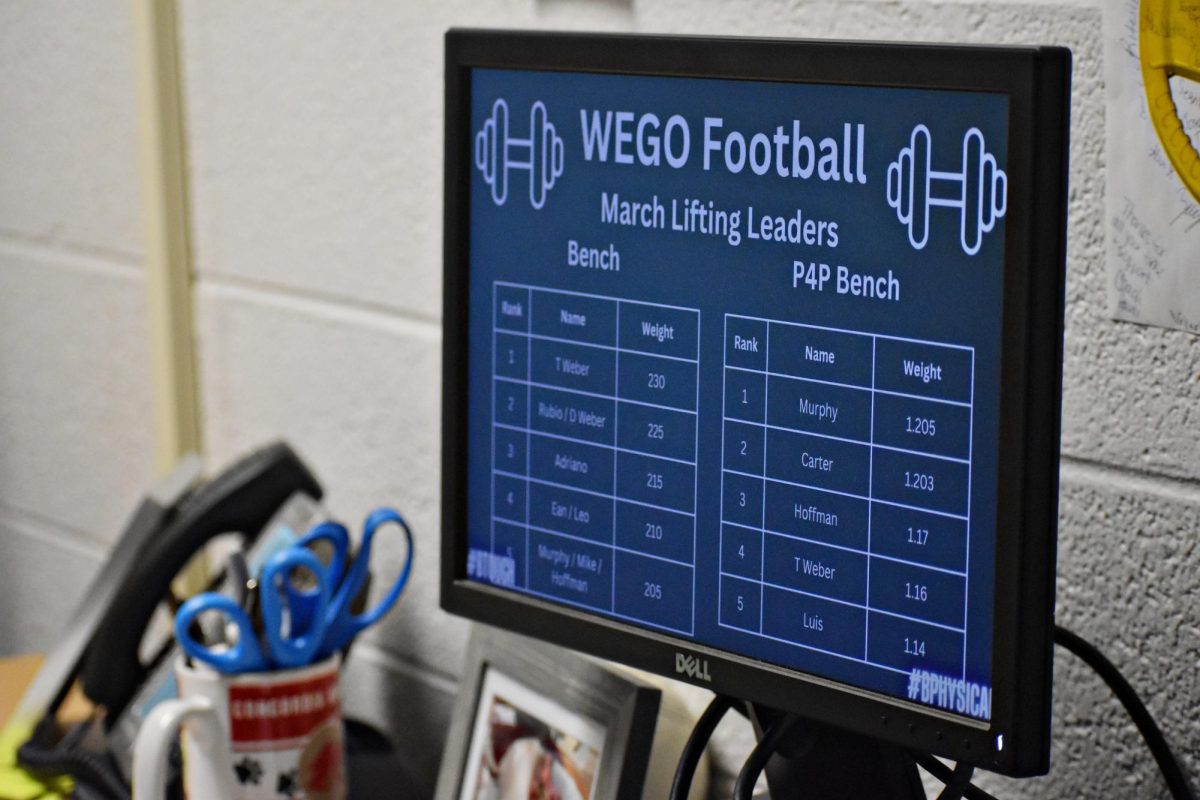
Coaches keep track of football’s “lifting leaders”, which is the leaderboard of the strongest players on the team, along with “P4P”, or the pound-for-pound ratio between how much a player weighs and how much they bench. This information is calculated by dividing bench weight by body weight.
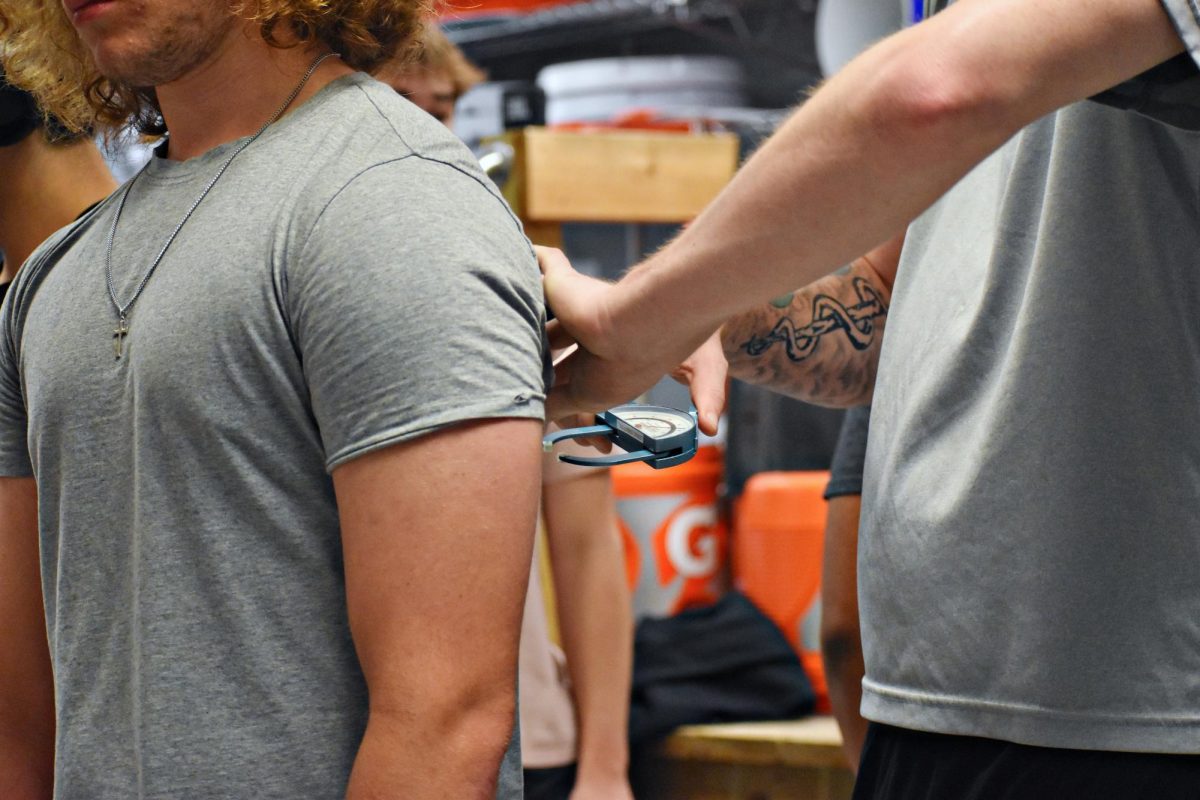
Sophomore Geoffrey Fleming stands as athletic trainer Tom Wolfsmith uses skinfold calipers to assess his muscle.
After lifting, players head into the athletic trainers office where they weigh themselves and measure body fat percentage. This allows the program to see how individuals have improved over time not only performance wise but also fitness-wise.
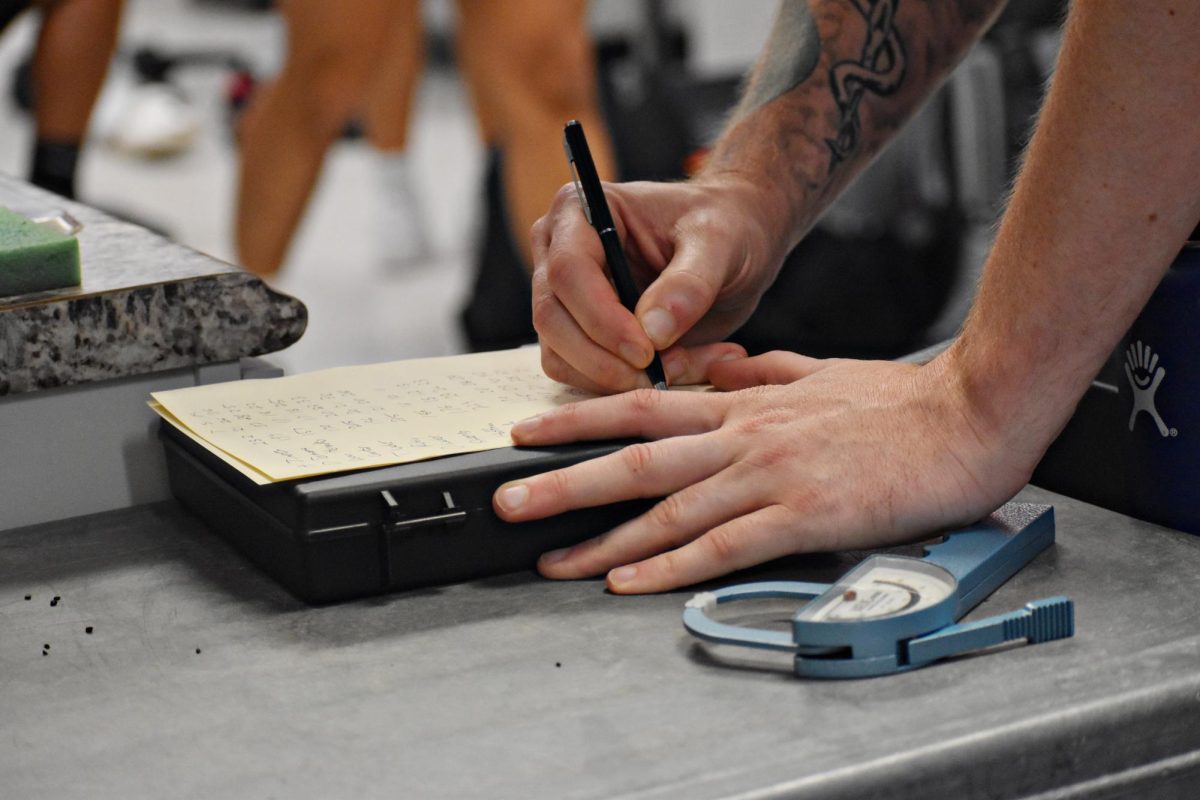
The trainer then records these results to keep a documented collection of statistics which players and coaches can then review throughout training.
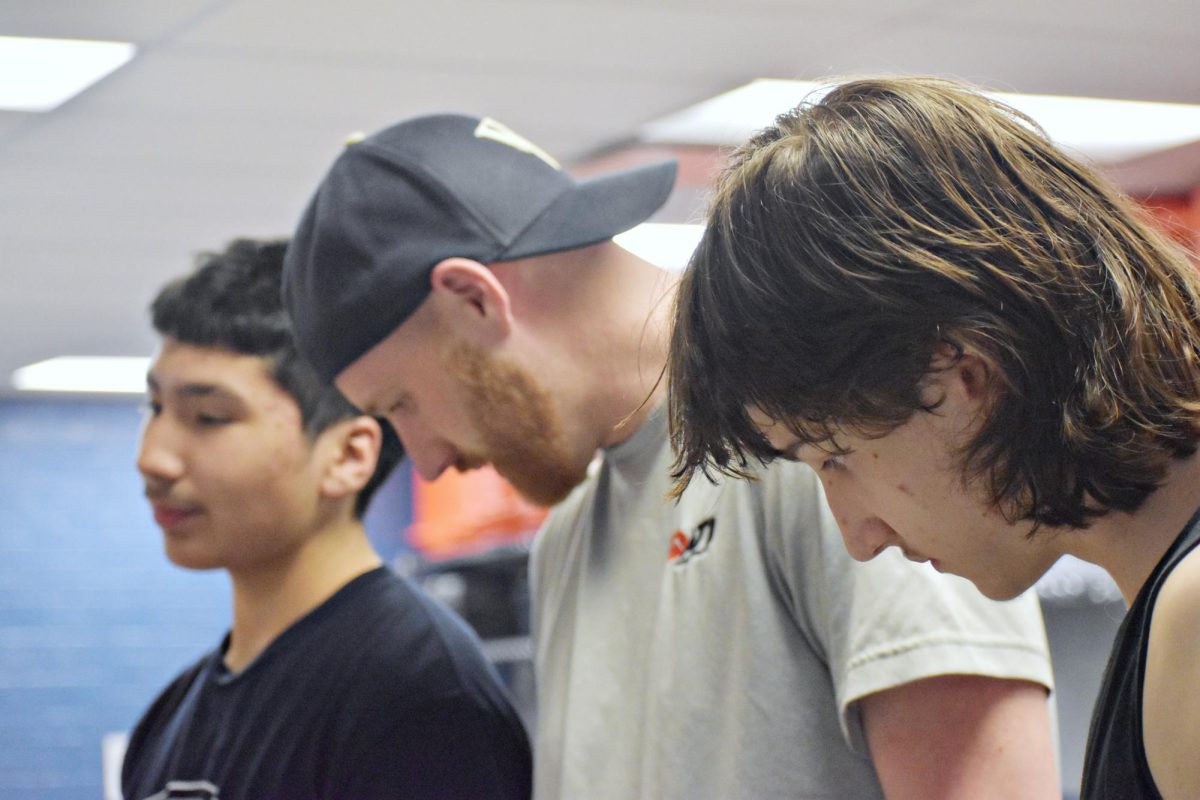
Junior Trevor Sweeney looks for his name on the notes chart while the trainer observes Gomez’s weight on the scale. Players are more prone to sharing or knowing each other’s scores than they are to keeping them private, which helps hold everyone accountable in reaching their goals and congratulating improvement.
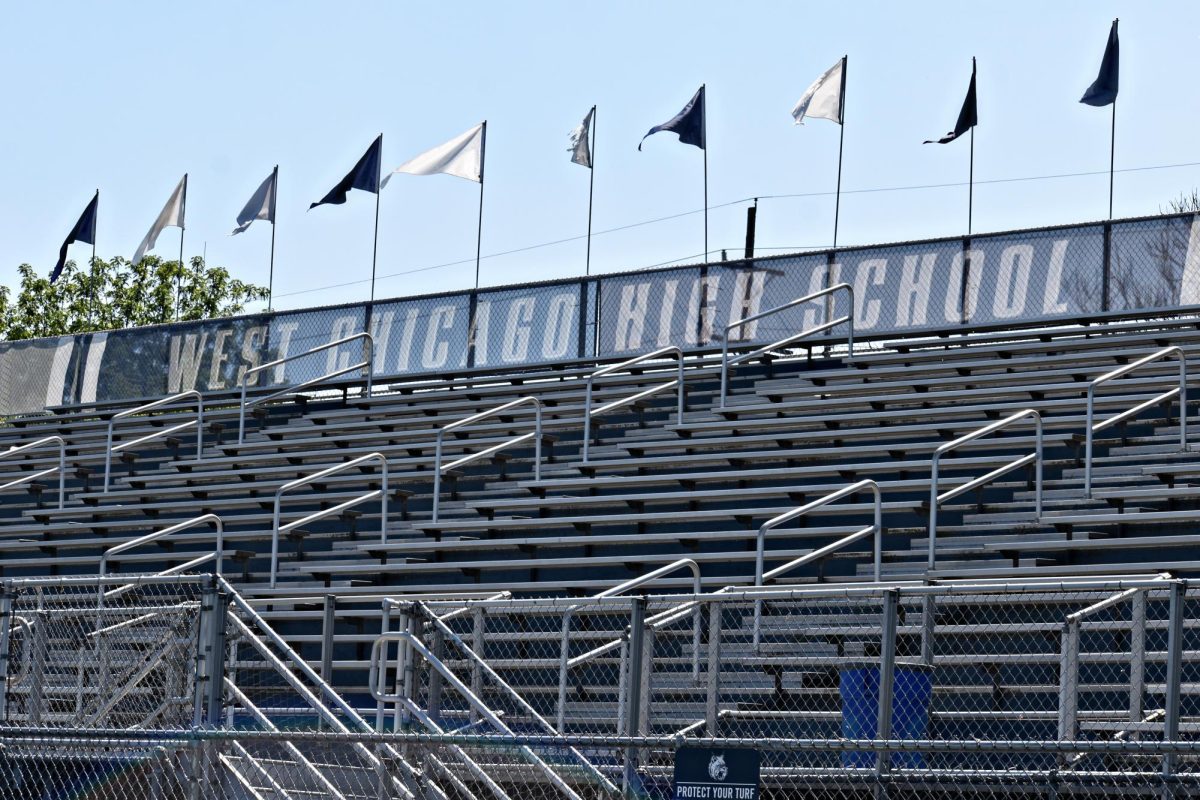
In just two months, the empty stadium will be filled with WEGO fans as they admire the growth and advancement of the hardworking players on the field during next year’s Friday night football games.
“Next season will be our best season in a long time, last year was a sneak peek but this year we’re really coming for it all. Although we graduated some crucial players we have a lot of young talent returning, looking to step up and fill those roles. We have a chance to do something special,” Zeitler said.
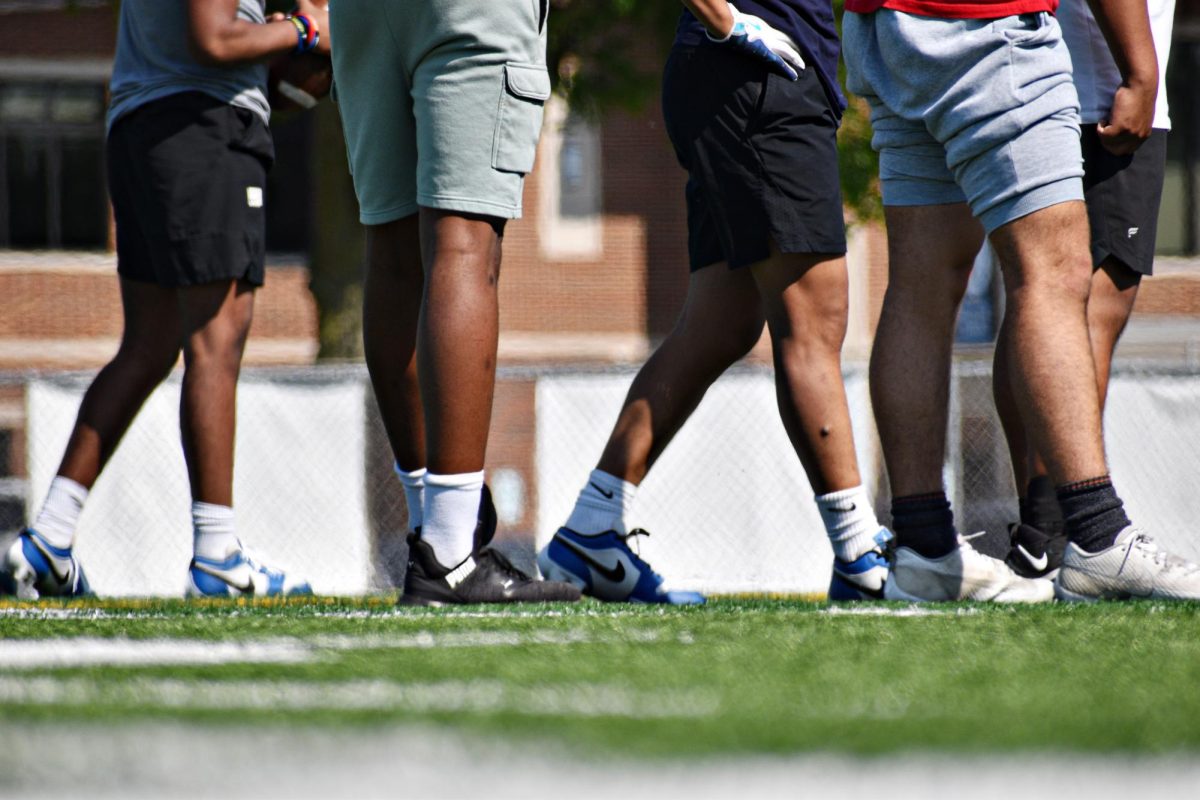
Along with training inside, players head out to the field to practice drills and routes which they aim to improve for next fall. Staying consistent is a major factor in gaining ultimate benefits.
“Training is crucial to how well you do during the season. A lot of people think football is a “fall sport” but it is a 365-day year-round season. We are constantly going to the field to work on our game and grow together while also making sure we are putting work in in the weight room. It’s a huge part of being successful as a program,” Zeitler said.
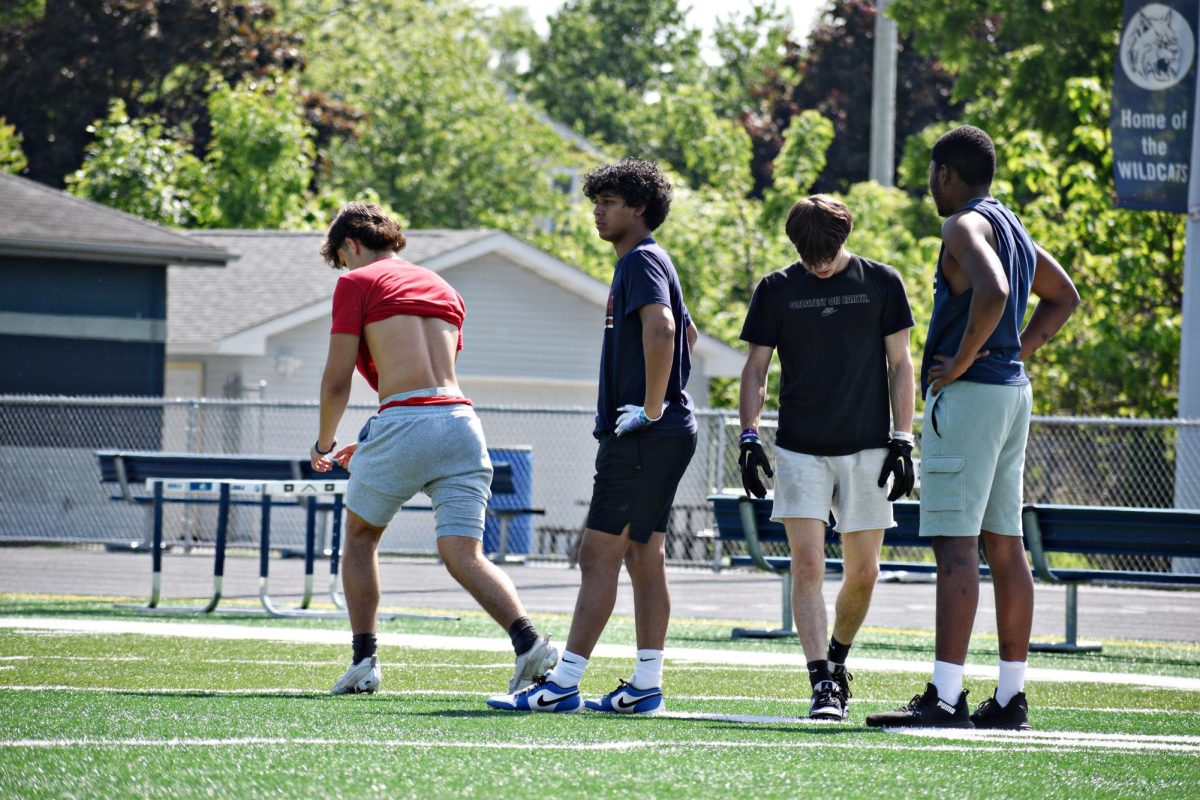
Teammates line up as they get ready to put their strategies into play with a combination of 1-on-1s, 2-on-2s, and other drills to test their competitiveness. This trains both offensive and defensive skills and allows players to target weaker areas.
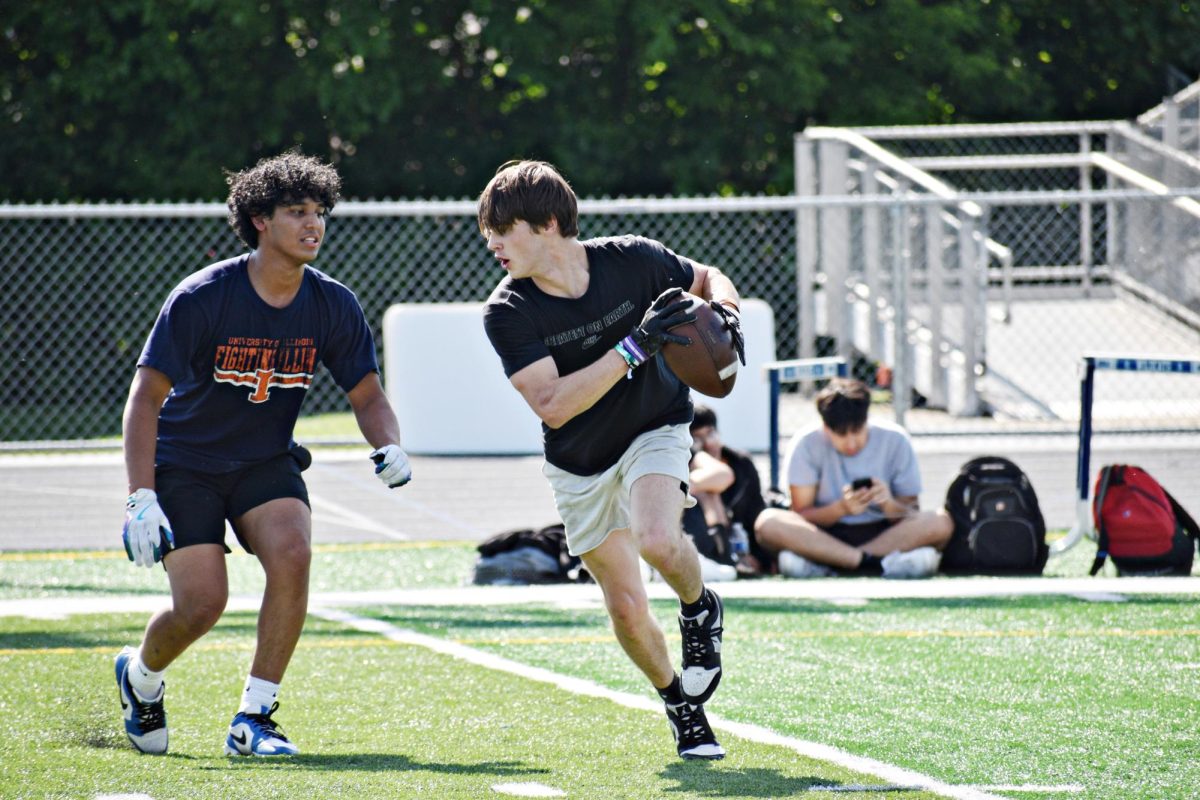
Senior Maha Aung and Zeitler start an impromptu scrimmage to advance further into their training.
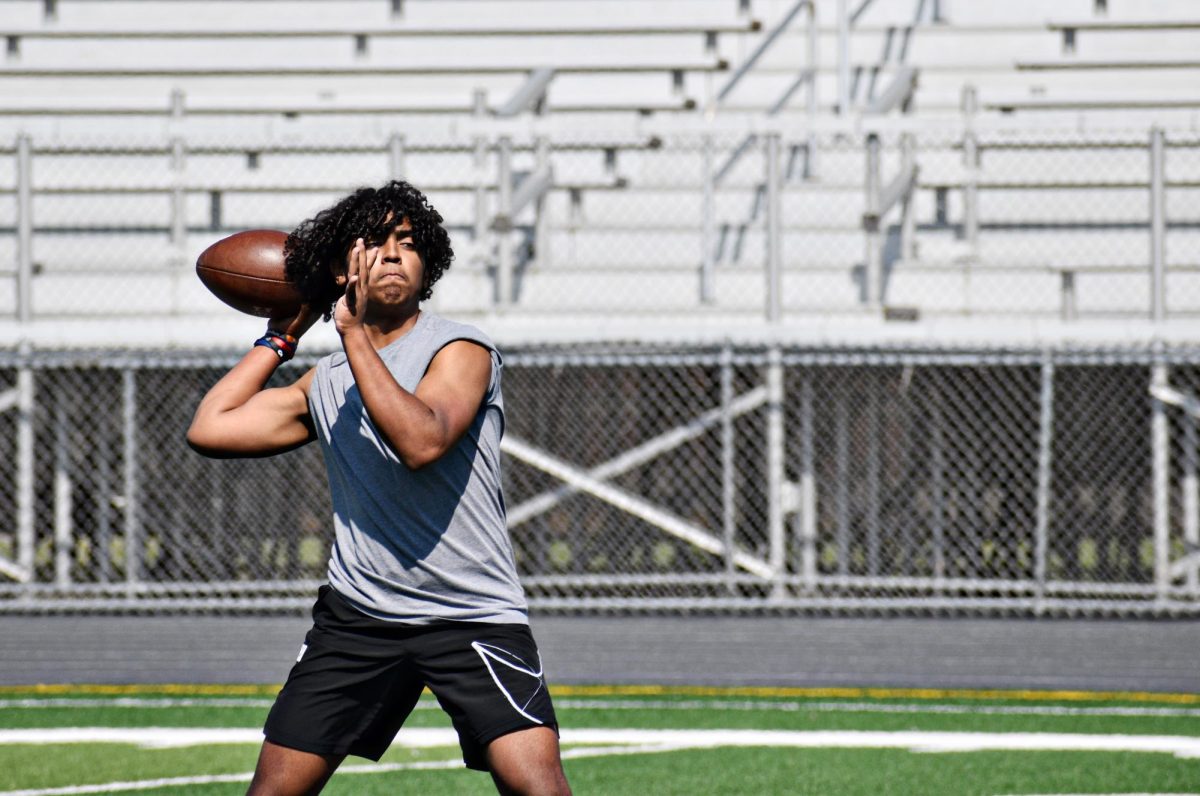
Carter Naranjo, a returning junior to the football program, practices his passing while others wait to receive and defend.
“I think training is great for me, coming out with the receivers and throwing a lot not only helps me but the other guys with our timing and other necessities,” Naranjo said.
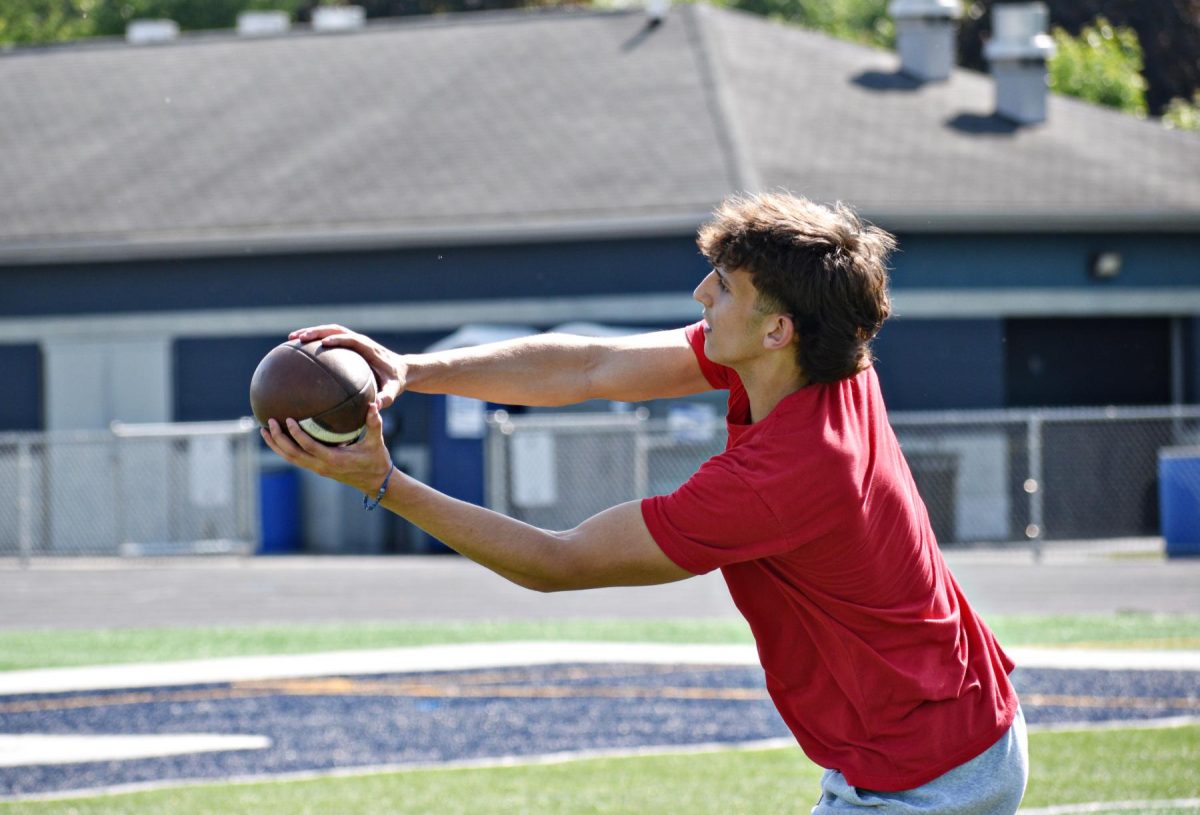
Zolota catches the ball after a stellar pass from Sylvester.
“Training 100% benefits my performance on the field because when I train my speed increases, strength increases, and I’m more mentally prepared for a game,” Zolota said.
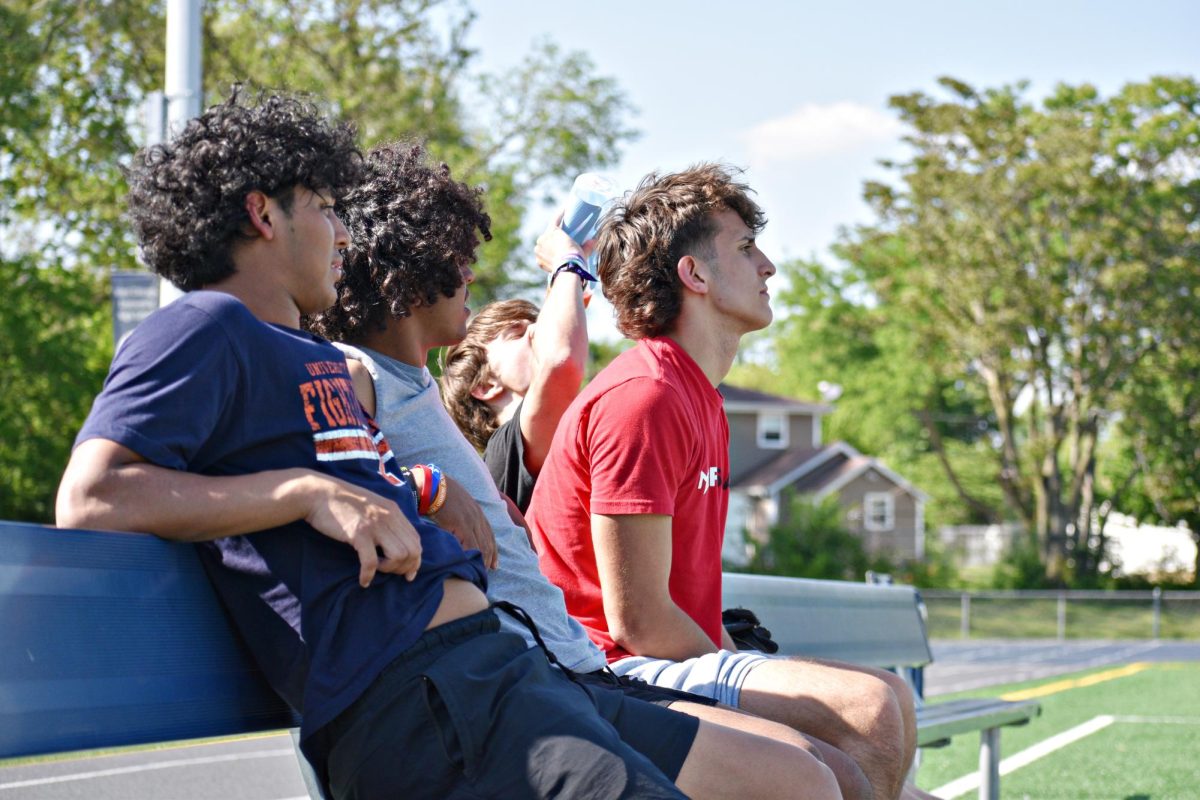
Staying hydrated and taking breaks is an essential factor for training, especially as the weather picks up intenser waves of heat and humidity.
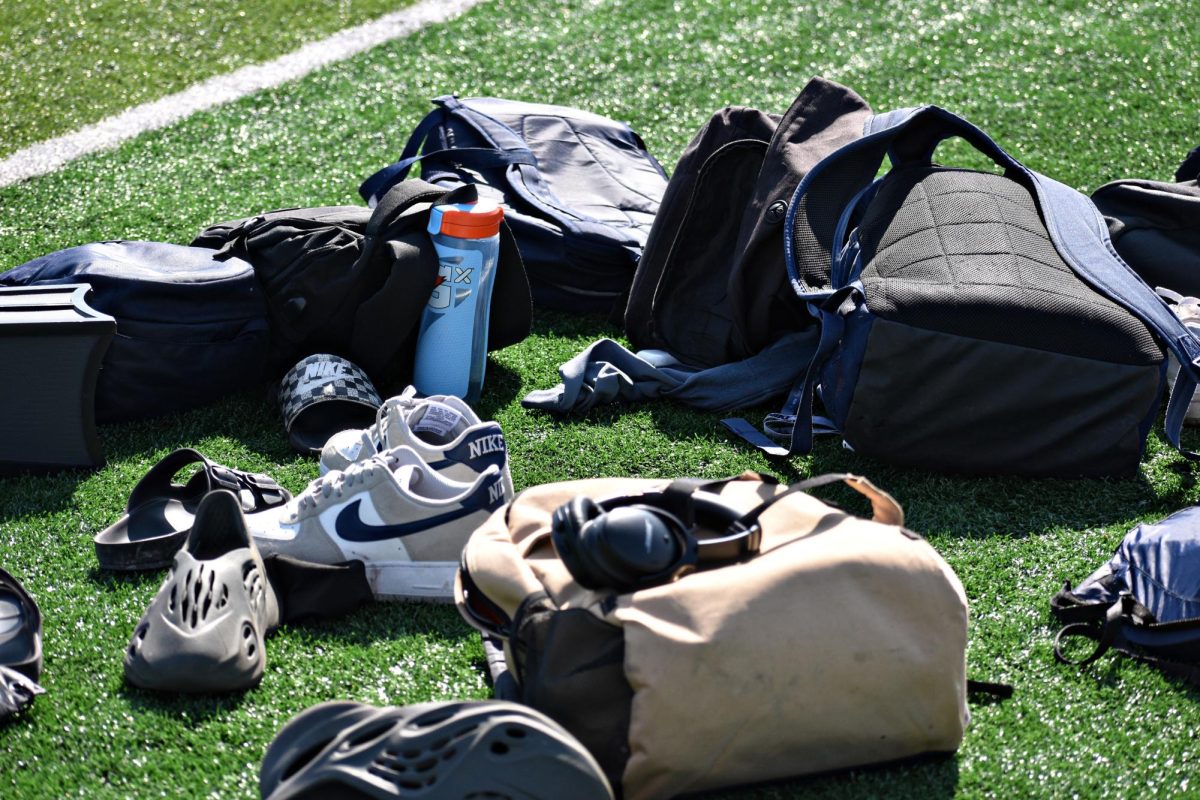
Finally, players pack up their belongings and head home. This entire process will continue throughout the summer during football camps. Although done for the day, these athletes are never fully done improving and always have more to work on.
“The most important part of the offseason to me has to be summer camp because that’s where we grow a lot as a team and work on things we struggled with in the fall,” Naranjo said.



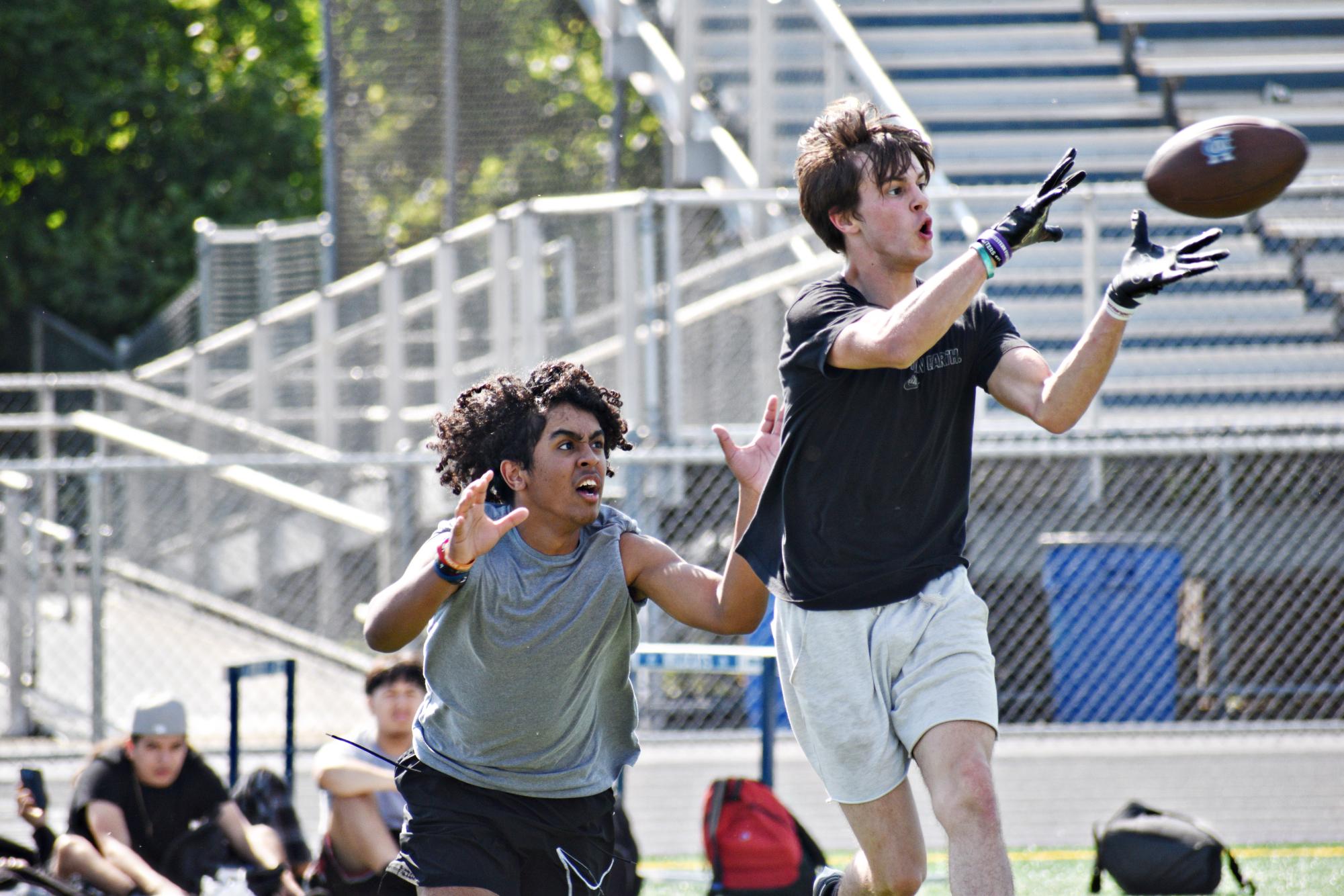
Nancy Staurovsky • Jun 7, 2024 at 9:55 pm
Great article. I love the way each picture was”illustrated “ with an explanation.
Certainly gives a better understanding of what goes into making a winning team.